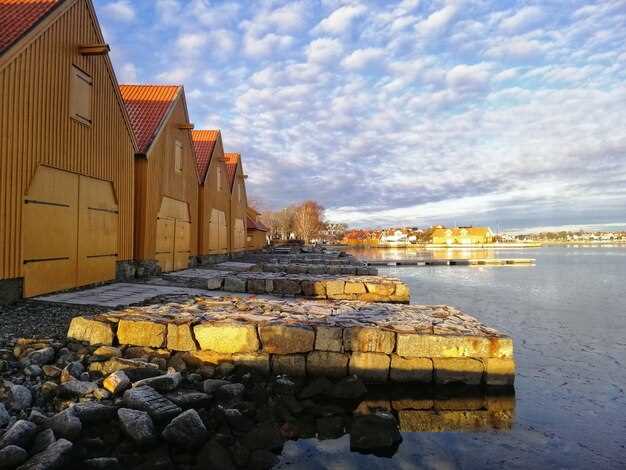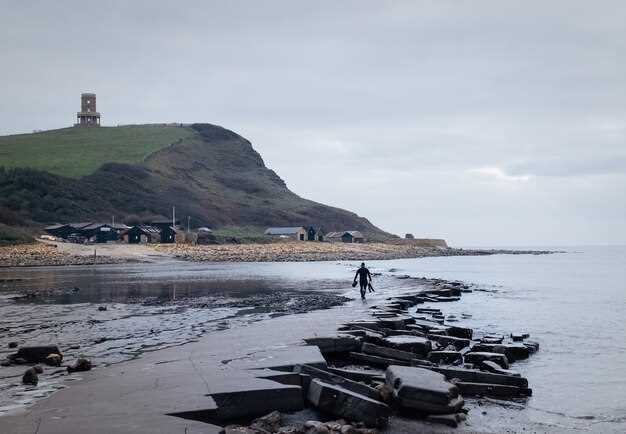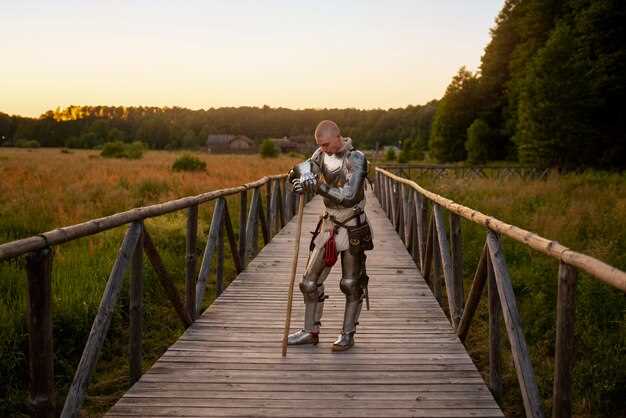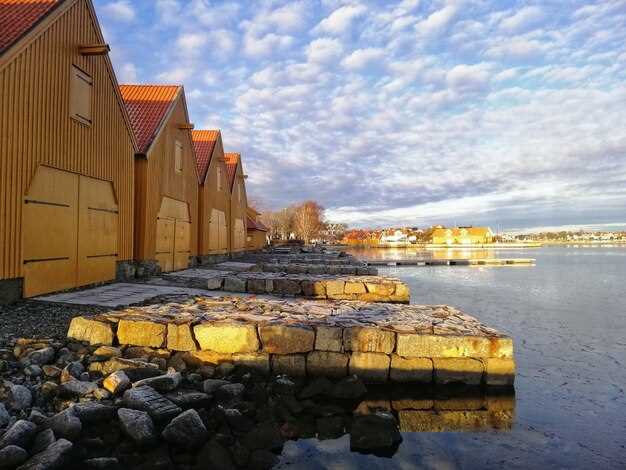Visit the cliffs of Møn, a breathtaking natural marvel that should be on your itinerary. The Møns Klint, with its spectacular white chalk formations, invites you to hike along its paths and admire the stunning views over the Baltic Sea. Bring your camera, as the landscape offers endless opportunities for memorable photographs.
Make sure to explore the nearby GeoCenter Møns Klint, where interactive exhibits highlight the geological significance of the area. Discover the fascinating history of the cliffs and learn about the ancient seas that shaped this extraordinary region. The center also provides guided tours that enhance your understanding of the local environment and its importance to the world heritage.
For a taste of local culture, stop by the charming village of Stege. Here, you can stroll through cobblestone streets lined with quaint shops and cafés. Try some local specialties, including fresh seafood or traditional Danish pastries, to fully appreciate the flavors of Møn. Don’t miss the opportunity to engage with friendly locals who are eager to share their island stories.
Finally, consider a bike ride around the island to uncover hidden gems and picturesque landscapes. The cycling routes are well-marked, allowing you to leisurely explore the pristine nature and historic sites at your own pace. Embrace the serenity of Møn and appreciate its unique blend of natural beauty and cultural heritage.
Understanding the Significance of UNESCO World Heritage Sites

Exploring UNESCO World Heritage Sites provides a glimpse into humanity’s cultural and natural achievements. These locations illustrate diverse histories and practices, offering invaluable knowledge and inspiration.
Each site carries a distinct narrative, showcasing unique architectural styles, historical milestones, or remarkable ecosystems. Their recognition by UNESCO highlights their global importance and encourages their protection.
- Cultural Appreciation: Experience local traditions, art, and architecture that resonate with the heritage of a region.
- Conservation Efforts: UNESCO’s designation attracts funding and resources for preservation, promoting sustainability.
- Tourism Development: Visiting these sites stimulates local economies, creating jobs and supporting community initiatives.
- Education and Awareness: Sites serve as outdoor classrooms, fostering appreciation for history and the environment.
Møn, known for its chalk cliffs and rich archaeological finds, represents Denmark’s commitment to preserving its natural and cultural heritage. Engaging with these sites deepens appreciation for our shared humanity and the environment.
Plan visits thoughtfully, considering guided tours or educational programs to enhance your understanding. Support local initiatives that focus on conservation and cultural exchange. Each visit contributes to the ongoing narrative of our world’s heritage.
How Møn’s Klint Represents Denmark’s Geological History

Møn’s Klint showcases Denmark’s rich geological past through its striking chalk cliffs, which rise dramatically over the Baltic Sea. These cliffs reveal layers of sediment dating back to the Late Cretaceous period, approximately 70 to 80 million years ago. Observing their composition offers insight into ancient marine environments, with fossils such as sea urchins and ammonites embedded within the chalk.
The unique white chalk of Møn’s Klint comes from the accumulation of tiny marine organisms, specifically coccolithophores, whose remains formed thick sediment layers over millions of years. This geological process highlights the importance of marine ecology in shaping the region’s landscape. Visitors can easily spot these fossils, making it a favored spot for both geology enthusiasts and casual explorers.
The cliffs themselves extend for about 7 kilometers, providing a stunning contrast against the blue sea. Key viewpoints, like the hiking trail leading to the cliffs, allow you to appreciate the scale and formation of the cliffs. Each layer tells a story of environmental change and the Earth’s shifting climate over millennia. The geological activity has not only shaped the physical appearance of Møn but also contributed to the region’s biodiversity.
To fully grasp Møn’s geological significance, a visit to the GeoCenter Møn is recommended. The center offers engaging exhibits that cover the formation of the cliffs and the various natural forces at play. It’s an excellent educational stop that enhances the appreciation of the site. Guided tours often include hikes along the cliffs, where experts explain the geological processes and the historical context of the formations.
Plan your visit carefully, considering the best times to explore. Dawn and sunset present opportunities for breathtaking photography as the light casts shadows across the cliffs. Whether you’re hiking, fossil hunting, or simply enjoying the view, Møn’s Klint serves as a direct connection to the ancient Earth, embodying millions of years of geological history waiting to be explored.
The Cultural and Historical Importance of Møn Island

Møn Island stands out as a unique destination with a rich tapestry of cultural heritage and historical significance. The island boasts the Cliffs of Møn, soaring up to 128 meters, which have inspired countless artists and thinkers. These white chalk cliffs not only form a stunning natural site but also play a pivotal role in Denmark’s geological history. Visiting these cliffs offers more than just breathtaking views; it provides insight into the ancient processes that shaped this part of the world.
Exploring Stege, the largest town on Møn, reveals a captivating blend of medieval architecture and charming streets. The town’s well-preserved buildings reflect its history as a bustling market town in the Middle Ages. The Stege Church, dating back to the 13th century, showcases remarkable Gothic elements and connects visitors to the island’s religious past.
The Møn Museum offers an engaging look at local history, focusing on the island’s development from prehistory to modern times. Artifacts, exhibitions, and interactive displays narrate the stories of the people who have called Møn home. This museum is a must-visit for anyone interested in understanding the island’s legacy.
Rural traditions still flourish on Møn, especially through local farming and crafts. Engage with local artisans who produce handmade goods, or visit farms that offer tours and tastings. This connection to the island’s agrarian roots provides an authentic experience of Møn’s cultural landscape.
One unmissable site is the prehistoric burial mounds in Almindingens, which date back thousands of years. These ancient structures serve as reminders of Møn’s deep historical roots and its significance in ancient Danish culture. Walking amongst these mounds offers a rare glimpse into the life of early Scandinavian civilizations.
The island also actively celebrates its culture through various festivals throughout the year, which align with local traditions. Participating in these events fosters a deeper understanding of the community’s values and history.
For history enthusiasts and cultural aficionados alike, Møn Island provides a rich and layered exploration of Denmark’s heritage. With its striking natural beauty, preserved historical sites, and vibrant local culture, Møn invites all to discover its stories and significance.
Practical Tips for Visiting Møn’s Klint
Wear sturdy footwear; the trails can be uneven, and proper shoes provide better grip. Bring adequate water and snacks, especially if you plan to hike along the cliffs.
Best Time to Visit
- Visit during spring or early autumn for pleasant weather and fewer crowds.
- Early morning hours offer scenic sunsets and more tranquil surroundings.
Getting There
- If traveling from Copenhagen, consider taking a train to Vordingborg, then a bus to Møn.
- Parking is available near the visitor center, but arrive early during peak season to secure a spot.
Check the tide schedule before your visit; some areas along the cliffs are only accessible at low tide. Bring binoculars for a closer look at local wildlife and geological features.
Don’t miss the visitor center for informative exhibits and guided tours. These can enrich your understanding of the area’s geology and history.
Fotographers will appreciate the unique angles the cliffs offer, so bring your camera and capture the beauty of the landscape. Be mindful of the fragile ecosystem; respect barriers and stay on designated paths.
Finally, plan for varying weather conditions. Bring layers to stay comfortable, as it can be windy near the cliffs.
Exploring the Flora and Fauna of Møns Klint
Visit Møns Klint during spring or summer to observe the stunning diversity of plant and animal life. The chalk cliffs host unique flora, like the rare wild orchid species, which thrive in the chalky soil. Remember to bring a camera to capture these beautiful flowers in full bloom.
Birdwatchers will enjoy the sight of various species, including the majestic white-tailed eagle and common buzzard, soaring above the cliffs. Early mornings provide the best chances to spot these raptors hunting along the coastline.
The region’s well-maintained trails offer easy access to different habitats. Along the paths, look out for unique insects, such as the striking green tiger beetle, which add to the vibrant ecosystem. Educational signs along the trails provide fascinating insights into each species’ role in the environment.
| Flora | Fauna | Observation Tips |
|---|---|---|
| Rare orchids | White-tailed eagle | Visit at dawn for best eagle sightings |
| Chalk-loving grasses | Common buzzard | Scan the cliffs for birds in flight |
| Sea campion | Green tiger beetle | Keep an eye on the paths and blossoms |
Exploring the coastal area at low tide reveals tidal pools teeming with marine life. Bring along a guidebook to identify crabs, starfish, and numerous shellfish. This interactive experience adds depth to your visit, illustrating the ecological connections within this UNESCO World Heritage Site.
Enjoy the opportunity to participate in guided tours that provide expert insights into local flora and fauna. Knowledgeable guides enhance your understanding of the delicate ecosystems present at Møns Klint, ensuring a rewarding experience. Engaging with the natural world here fosters a deeper appreciation for Denmark’s unique heritage.
Key Landmarks and Attractions Near Møn
Visit Møns Klint, a dramatic chalk cliff offering breathtaking views of the Baltic Sea. The white cliffs rise up to 128 meters, providing excellent hiking trails. Bring your camera to capture the striking contrast between the blue water and the white chalk.
Explore the GeoCenter Møns Klint, where you can learn about the geological history of the area through interactive exhibits and films. The center also organizes guided walks and activities that highlight the region’s unique geology.
Make your way to the picturesque village of Stege, known for its charming atmosphere and medieval architecture. Wander through the narrow streets, visit the Stege Kirke, and enjoy local delicacies at cozy cafes.
Discover the ancient burial mounds at Aakirkeby, which offer insight into Denmark’s Viking past. The impressive site allows for a peaceful stroll while you contemplate the region’s rich history.
Check out the Møns Museum for a deeper understanding of the island’s culture and heritage. Exhibits feature local art, ancient artifacts, and information on the island’s history, making it a great stop for history enthusiasts.
Visit the Nyord island, just off the coast of Møn, to experience unspoiled nature and an abundance of birdlife. Explore the island on foot or by bike, and enjoy the tranquil surroundings away from the hustle and bustle.
Activities for Nature Lovers in Møn
Explore the stunning cliffs of Møn, particularly the famous Møns Klint. Walk along the marked trails to capture breathtaking views of the chalk cliffs soaring above the Baltic Sea. Don’t forget your camera; the dramatic scenery offers perfect photo opportunities.
For a unique experience, visit the Møn Biosphere Reserve. This area boasts diverse ecosystems, making it ideal for birdwatching. Bring binoculars to catch glimpses of rare bird species. Participating in guided bird tours enhances your understanding of local wildlife.
- Hiking: Traverse the scenic routes throughout the island, including routes through lush forests and along coastal paths. The 70-kilometer long trails cater to different skill levels.
- Cycling: Rent a bike and explore the countryside. Designated cycling paths lead you past charming villages and remarkable landscapes.
- Photography: Utilize the diverse natural backdrops for photography sessions. Sunrise and sunset provide magical lighting, particularly around the cliffs and coastlines.
- Geocaching: Join the treasure hunt by geocaching around the island. Use your phone to find hidden caches and discover lesser-known spots.
Take a guided nature walk with locals who share insights about Møn’s flora and fauna. They can lead you to hidden gems and explain the unique characteristics of the island’s ecosystems.
If you enjoy water activities, kayaking allows you to explore the coastline from a different perspective. Rent a kayak and paddle along the serene waters, discovering secluded beaches and coves.
Each season offers distinct experiences–visit in spring for vibrant wildflowers or in autumn for breathtaking foliage. Every trip promises unique encounters with nature’s beauty in Møn.
Historical Sites to Discover on Møn Island
Visit the stunning Møn Klint for breathtaking chalk cliffs that have fascinated visitors for centuries. This UNESCO World Heritage site showcases geological formations and offers well-marked trails along the coastline, leading to panoramic views of the Baltic Sea.
Stege and its Medieval Heritage
Explore Stege, the largest town on Møn, rich in medieval charm. Stroll through cobbled streets, admire the well-preserved half-timbered houses, and stop by the Stege Church, dating back to the 13th century. The church features an impressive altar and is a great example of local architecture.
Liselund Castle and Gardens
Discover Liselund Castle, a romantic estate constructed in the early 19th century. The picturesque gardens, inspired by classical landscapes, invite you for a leisurely walk. Inside the castle, the beautiful interiors reflect the era’s style, providing a glimpse into the history of Danish nobility.
Don’t miss the chance to visit the nearby ruins of the medieval Trelleborg, an ancient fortified settlement that highlights the Viking Age heritage. Walking amongst the remnants offers insight into the life and strategies of the Viking warriors.
The Role of Møn in Denmark’s Maritime History
Møn played a significant part in Denmark’s maritime history, particularly due to its geographic position in the Baltic Sea. The island’s strategic location made it a key point for trade routes connecting Scandinavia with mainland Europe. Ships regularly sailed from Møn to cities like Copenhagen and beyond, facilitating economic growth and cultural exchange.
The island’s abundant resources, including timber and agricultural products, supported shipbuilding industries. Local craftsmen became known for their high-quality vessels, which contributed to the burgeoning Danish trade network in the 16th and 17th centuries. These ships helped solidify Denmark’s status as a maritime power during the Age of Sail.
Møn’s coastal towns, such as Stege, thrived as bustling ports. The old medieval town still reflects its rich maritime heritage through architecture and preserved sites. Explore the Stege Harbor, where fishermen and traders once gathered, bringing the past to life in a charming atmosphere.
The iconic cliffs of Møn, rising dramatically from the sea, not only attract tourists but also served as navigational markers for sailors. These natural landmarks made it easier for mariners to chart their courses and have guided countless vessels safely along the coast.
Today, Møn continues to celebrate its maritime legacy. Engage with local museums that showcase maritime artifacts and stories that highlight the island’s seafaring past. Various events, such as sailing regattas, allow visitors to experience traditional shipbuilding and navigation techniques, creating a connection to the island’s rich history.
Visiting Møn provides a unique opportunity to immerse yourself in Denmark’s maritime history. Take advantage of guided tours and local experts who can share insights into the island’s role in shaping the nation’s seafaring identity.
Local Cuisine and Dining Options in Møn
Try the local seafood at Restaurant Tambohus. They serve fresh fish caught in nearby waters, along with traditional Danish dishes prepared with a modern twist. Don’t miss their herring platter, a real favorite among visitors.
For a cozy atmosphere, visit Den Gamle Købmand. This charming eatery offers a selection of locally sourced ingredients. Their daily specials often highlight seasonal vegetables and meats. Enjoy a slice of their homemade cake for dessert; it’s a popular choice!
If you’re looking for something casual, stop by Møn Is, a small ice cream shop that uses local dairy. Their unique flavors, including elderflower and raspberry, are a delightful treat on a warm day.
For a touch of Danish tradition, eat at Krokodillen. This restaurant showcases classic smørrebrød, open-faced sandwiches topped with various meats, fish, and pickles. Try the beef tartare variation for an authentic experience.
Finally, explore the local vineyards at Møn Vinfabrik. They offer tastings and pair their wines with local cheeses. This is a nice way to unwind and appreciate the unique flavors of the island.
Understanding the Conservation Efforts in Møn’s Klint Area
The Møn’s Klint area actively engages in conservation initiatives aimed at protecting its unique geological and ecological features. Collaboration among local authorities, researchers, and environmental organizations promotes sustainable practices while balancing visitor access and preservation of natural resources.
One key aspect includes ongoing geological research, which enhances understanding of the chalk cliffs’ formation and contributes to educational outreach. Guided tours delve into the region’s natural history, enabling visitors to appreciate its significance without compromising its integrity.
Community Involvement and Education
Local community involvement plays a pivotal role in conservation efforts. Volunteer programs encourage residents to participate in clean-up activities and maintenance of trails, fostering a sense of stewardship. Schools engage students through workshops focused on environmental science, encouraging younger generations to value and protect nature.
Regulated Access and Environmental Protection
Access to sensitive areas is carefully regulated to minimize human impact. Designated paths and viewing platforms ensure visitors can enjoy the breathtaking scenery responsibly. Periodic assessments of the ecosystem help identify any adverse effects from tourism, allowing for timely interventions. These combined efforts contribute to the preservation of Møn’s Klint as a stunning heritage site for future generations.
Tips for Sustainable Tourism in Historic Denmark
Choose local transportation options like biking or walking to minimize your carbon footprint while exploring Møn’s beautiful landscapes and heritage sites. Many areas in Denmark are bike-friendly, allowing for an enjoyable experience without contributing to pollution.
Support local businesses by dining at restaurants that use locally sourced ingredients. This not only enhances your culinary experience but also helps sustain the community. Restaurants often showcase traditional Danish recipes, providing insight into local culture.
Participate in guided tours conducted by local residents. They offer invaluable perspectives on historical sites and their significance. Look for tours that focus on sustainability and conservation, ensuring that your visit supports both the environment and local history.
When visiting historic landmarks, respect the rules and guidelines. Stick to marked paths to protect fragile ecosystems and ensure that future visitors can enjoy the same experience. Being mindful of your surroundings helps preserve these treasures for generations to come.
Reduce waste by bringing reusable water bottles and shopping bags. Many tourist areas have refill stations for water, making it easy to stay hydrated without creating plastic waste.
Engage with community projects aimed at conservation. Many local organizations offer volunteer opportunities where you can contribute actively to preserving Denmark’s cultural and natural heritage while deepening your connection to the area.
Consider off-peak travel times to help distribute visitor numbers more evenly. This approach allows for a more relaxed experience and reduces pressure on the infrastructure and environment.
| Tip | Benefit |
|---|---|
| Use local transport | Lower emissions and enhance the experience |
| Support local eateries | Boost the local economy and enjoy authentic cuisine |
| Join local tours | Gain unique insights and support sustainable practices |
| Follow site guidelines | Help preserve historical sites for future visitors |
| Bring reusable items | Minimize waste and protect the environment |
| Volunteer for conservation | Engage actively with the community and make an impact |
| Travel during off-peak times | Enhance personal experience and relieve crowding |
Video:
Denmark Travel Guide – top 10 attractions worth visiting
Denmark Travel Guide – top 10 attractions worth visiting by ExpatMe 1,114 views 1 month ago 11 minutes, 25 seconds
Q&A:
What are the highlights of exploring World Heritage Denmark in Møn?
Møn offers stunning coastal cliffs, particularly the Møns Klint, which is famous for its white chalk cliffs rising dramatically above the sea. Visitors can enjoy breathtaking views, hiking trails, and opportunities to learn about the geological history of the area. The ancient burial mounds and impressive churches, such as the medieval Church of Our Lady with its beautiful frescoes, also add to the region’s historical significance. Besides the natural beauty, local culture and cuisine are worth experiencing as well.
How does Møn fit into Denmark’s overall heritage narrative?
Møn is part of Denmark’s rich historical and cultural landscape, recognized for its well-preserved natural and man-made sites. Its inclusion as a UNESCO World Heritage site highlights the importance of protecting its natural formations and archaeological sites. The island showcases traditional Danish rural architecture and cultural practices, contributing to the understanding of Denmark’s history and identity. Through successful conservation efforts, Møn stands as a model for balancing tourism, preservation, and community life.
Can you recommend any specific activities or experiences on Møn?
Visitors to Møn can participate in various activities that enhance their experience of the island’s heritage. Hiking along the cliffs of Møns Klint provides not only spectacular views but also opportunities to encounter unique flora and fauna. For those interested in history, a visit to the GeoCenter Møns Klint includes interactive exhibits about the area’s geology and environment. Cycling through the scenic countryside is another popular activity, while local seafood restaurants offer a taste of regional cuisine.
What is the best time of year to visit Møn for heritage exploration?
The best time to explore Møn for its heritage sites is during the late spring and summer months, from May to September. During this period, the weather is generally mild and ideal for outdoor activities like hiking and cycling. The longer daylight hours allow visitors to fully enjoy the sights and partake in local festivals and events that celebrate the island’s culture. However, autumn can also be beautiful, with striking fall colors and fewer tourists, providing a more peaceful experience.
Are there any local customs or traditions that visitors should be aware of in Møn?
Visitors to Møn should be aware of the local customs that reflect Denmark’s rich traditions. It’s common to greet locals with a friendly “Hej” and to engage in small talk. During dining, it’s polite to wait until everyone is served before starting to eat. The island hosts various local events and fairs, especially in the summer, where visitors can experience Danish music, dance, and traditional food, emphasizing the community spirit. Participating in these events can provide deeper insight into the local culture and ways of life.
What are some of the key attractions in Møn that highlight its UNESCO World Heritage status?
Møn is home to several remarkable attractions that showcase its UNESCO World Heritage designation. One of the most prominent sites is the Møns Klint, a stunning chalk cliff formation that rises dramatically from the Baltic Sea and offers breathtaking views. Visitors can hike along the trails that provide access to the cliffs, making it a popular spot for both tourists and nature enthusiasts. Additionally, the prehistoric burial mounds located near Stege, as well as the charming town itself, reflect the rich history and cultural significance of the area. Exploring the local museums can further enhance the understanding of Møn’s heritage and natural history.
